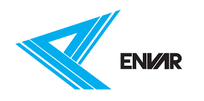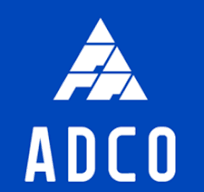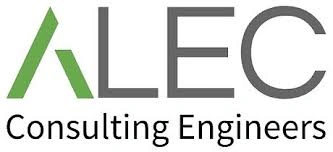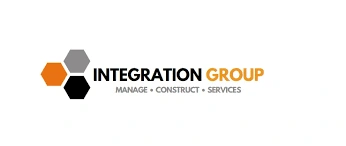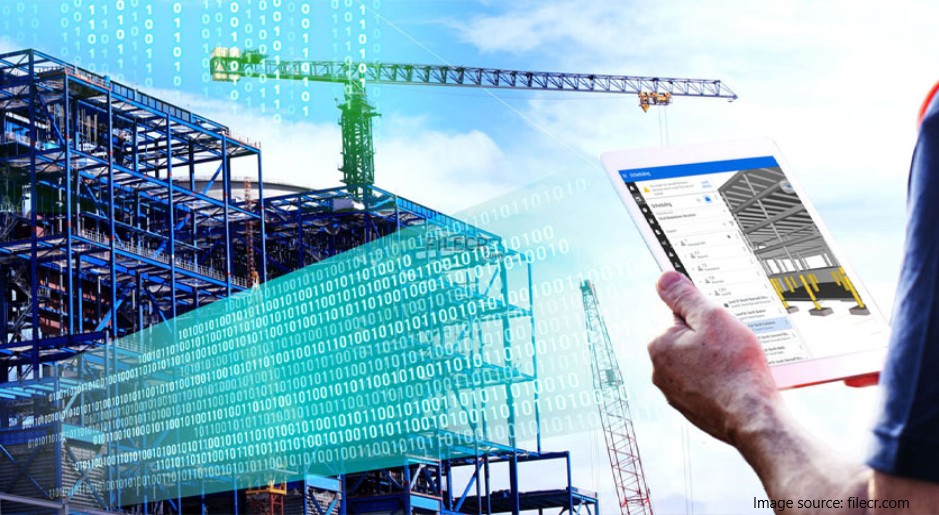
The Australian construction industry is increasingly leaning on digital tools—BIM, AI, collaboration platforms—to deliver better projects, faster, and with fewer surprises. But the path hasn’t always been smooth. Below are several project stories from across Australia that illustrate what went right, what went wrong, and what others can learn.
- Perth Children’s Hospital – BIM & Whole-Lifecycle Efficiency
What was done:
- For the Perth Children’s Hospital (PCH), BIM was mandated for design and construction, including deliverables suitable for facilities management. natspec.org+1
- Multiple BIM tools and governance processes were used: frequent team meetings, co-location of stakeholders, and coordination of models from different disciplines. natspec.org
Outcomes / Cost & Time Savings:
- The state of Western Australia recognised that BIM offered opportunities to drive efficiencies and cost savings over the full capital project lifecycle.
- The case study identified 26 specific benefits from using BIM in PCH. These included improved design coordination, fewer clashes, better coordination between trades, better constructability reviews, more efficient FM handover.
Challenges / What Was Hard:
- Ensuring all stakeholders adopted consistent BIM standards. Different firms/disciplines sometimes had varying levels of BIM maturity.
- Managing the governance of the BIM models: who owns which part, who updates, who checks.
- Integrating BIM data into facilities management workflows (handover, FM use) required more planning and discipline.
Lessons Learned:
- Mandating BIM helps—but only if the mandate is accompanied by clear requirements (what is delivered, what formats, what level of detail).
- Early coordination (before construction) among stakeholders is essential. Clashes and errors are far cheaper to resolve in design.
- Strong governance, communication, and project management of BIM processes are as important as the technology.
- Sydney Metro Projects – BIM + Collaboration under Constraints
What was done:
- On Sydney Metro projects, advanced use of BIM was tested, particularly in coordination and decision-making among multiple parties under constrained circumstances. mce-aus.com
- Digital models, clash detection, co-ordination meetings, and shared data environments (or collaborative platforms) were used to ensure alignment across design, engineering, construction teams. mce-aus.com
Outcomes / Savings:
- The projects benefited from fewer rework cycles and fewer surprises on site. Improved decision-making earlier reduced delays. (Exact dollar amounts are not public in all cases, but stakeholders reported improved efficiency and fewer delays.) mce-aus.com
Challenges / What Was Hard:
- Physical constraints and resource constraints (space, space in the urban environment, site logistics) meant that even with good digital planning, execution could still be difficult.
- Ensuring consistency of data across multiple design teams/subcontractors: when one party’s model is behind or not compliant, clashes or misalignments can slip through.
- Cultural / process resistance: Some teams preferred traditional drawings or ways of working, which slowed things down.
Lessons Learned:
- BIM + collaboration tools only pay off if all parties buy in and maintain their part of the model. Gaps in participation erode benefits.
- Use digital mockups/clash detection early to identify coordination issues; don’t leave integration until late.
- Regular coordination meetings and consistent, enforceable standards (file formats, naming, model quality) are essential.
- Lessons from Broader Failures & Technology Resistance
While many projects show success, there are also examples where things didn’t go well—either partly failing or delivering less than hoped, especially around AI, adoption, and collaboration.
What has been observed:
- Technology adoption (especially AI/automation) remains relatively low in Australian construction, often due to concerns about cost, unclear ROI, data quality, and lack of skills. Build Australia+1
- Poor collaboration and communication breakdowns are still among the most common causes of project delays and cost overruns. It’s not always the tech that fails—it’s the process, roles, responsibilities, and alignment that do. Accura Consulting+1
- Some high-profile infrastructure or construction projects suffer from schedule and budget blowouts due to under-estimating risks (site conditions, stakeholder coordination, regulatory / permitting delays) and not having good digital/AI-driven simulations or predictive tools in place. jcu.edu.au+1
Key Lessons from Failures:
- Don’t treat technology as a plug-and-play cure. Without well-defined processes, clear governance, training, and ownership, even excellent tools under-deliver.
- Plan for the people side—change management, training, incentives, roles. Resistance will constrain ROI.
- Data quality matters: If inputs (models, data sets, schedules, cost estimates) are poor, the outputs / predictive models/clash detection / AI models will suffer. Garbage in, garbage out.
- Predictive tools (AI, simulations) are only useful if you have enough historical, sensor or site data to feed them; for many projects, this is a gap.
- Case Study: Using BIM for Time & Cost Reduction (Recent Research Insights)
A recent open-access multi-case study (2025) looked at several projects globally (including some Australian cases) and quantified what BIM implementation achieved:
- On average, a 20% reduction in project timelines and a 15% reduction in costs when BIM was properly used, particularly via reducing design errors, RFIs (Requests for Information), and unbudgeted changes. SpringerLink
- Also reported: design errors reduced by ~30%, RFIs by ~25%. These kinds of improvements cascade into less rework, more certainty in scheduling, and fewer surprises. SpringerLink
- How AI & Smart Building Technologies Are Being (or Not Yet Being) Realized
Some projects & firms in Australia are experimenting with AI / smart building tools; here are what’s working and what the sticking points are.
What’s working:
- AI is being used for predictive maintenance, equipment monitoring, scheduling optimization, and resource allocation. Helps avoid downtime. Steadfast Solutions+1
- Smart building features (sensor networks, IoT), combining with building models to monitor energy, usage, etc. These bring operational efficiencies and improved sustainability outcomes. PlanRadar
- Use of cloud-based collaborative platforms for sharing drawings & models in near real time to reduce miscommunication or the use of outdated documents. Particularly helpful for larger infrastructure or hospital projects.
What’s challenging:
- Many firms report that AI or smart building tech projects stall due to a lack of in-house skills, especially understanding AI models, interpreting outputs, and integrating with existing digital workflows.
- Data ownership/privacy/security concerns. Collecting sensor data, model data, etc. becomes sensitive in hospital/government / regulated environments.
- Cost of implementing sensors / IoT / smart systems, and uncertainty about pay-back period.
- Resistance from subcontractors or suppliers who may be less digital, slower to adapt; sometimes, they are the weak link.
- Recommendations / Practical Tips for Firms Starting Out
- Begin with a pilot project using BIM + collaboration tools / AI, ideally on something of moderate size. Use that as a proof point.
- Define clear deliverables: model standards, formats, level of fidelity, what gets delivered to FM, and who owns what.
- Invest in change management: training, accountability, clarity about workflows. Don’t assume everyone will adapt immediately.
- Ensure governance of digital tools: version control, model checking, standardized naming, consistent toolsets (or defined integration).
- Data is fundamental: accurate survey/site data, as-built, sensor data if using smart building tech. Poor input = lower benefit.
- Monitor metrics: cost overrun, schedule variance, number of RFIs, number of clashes, rework hours. Track “before vs after” so you can show ROI.
Australia is seeing clear success stories in using BIM, collaboration tools, and emerging AI / smart building tech. But the projects that have delivered big savings and improved outcomes tend to share these traits:
- Strong leadership/mandate
- Clear standards and governance
- Early coordination and stakeholder alignment
- Focus on data quality
- Willingness to invest in people (skills/training)
- Keeping the scope manageable and avoiding trying to do everything at once
For firms looking to get more from their projects, the message is: the tools are ready but using them well (not just having them) makes the difference.
Draftech – Your Project, Our Expertise
Testimonials
Thank you for all your efforts on our projects; they have been an invaluable contribution to their success. We look forward to working with you on future projects.
Ian Ferguson MPM Group
Jess and Karl at Draftech were amazing. The communication from the start was prompt, and the entire process was extremely easy. We needed their knowledge on Air Schematics, and they had made one up for our buildings that we service. Thanks so much, and we will be using you guys in the future. Cheers, Air Control Australia.
Greg Colebrook AirControl Australia
With Draftech’s thorough understanding of building services modelling and close attention to detail, Forth has been afforded the opportunity to outsource some of our BIM projects with absolute confidence in the accuracy of the final product.
Gary Murdoch Forth Consulting
Very professional and efficient organization. Delivered a great product to a tight deadline.
ACE Power
Karl and the team are very professional and have a vast knowledge of BIM coordination.
Dwayne Willaims Babinda Electrics
We had multiple large projects with tight deadlines and needed a company we could trust. The teams delivery, attention to detail and understanding of what is being designed is always executed to a high standard.
Martin O’Donovan Envar Engineers
Draftech offered a flexible and reliable approach to working collaboratively with our team. They met our expectations and quality requirements and also offered up new ideas.
Draftech have proven to be a valuable and trustworthy resource and we will continue to work with Draftech on other projects.
Simon Marsden Umow Lai
Draftech is different from others in the professionalism and features they provide.
The ability to walk through projects in real time online provides invaluable insight into problem areas and helps provide an efficient resolution on the spot without many phone calls, emails and the necessity for us to paw through countless drawings to understand the issues.
Todd Morris Manager - Air mech
Draftech were put forward to FIP Electrical as the solution to Coordinate, Model, carry out clash detection, provide Electrical Services Shop Drawings, as built documentation and completed electrical model.
Simon Thorpe FIP Electrical
In close collaboration Draftech set up all our systems and model deliverables. In this process Draftech have proven to be a valuable resource for us and demonstrated commitment, understanding and professionalism.
David Skelley DJCoalition
Draftech’s attention to detail and proactive nature throughout the project assisted us in identifying issues before becoming evident on site, saving us both time and unexpected costs.
Matt Payne PJM Engineering Services
They delivered very high quality Revit models and associated 2D documentation at key milestones, working to a tight budget and in strict accordance with the Architects’ BIM requirements.
Peter Thomas Geoff Hesford
We found Draftech’s work to be of high standard and the team delivered exactly as agreed, in fact, when we considered the project complete, Draftech put further resources into the project as they were not satisfied.
John Johnson Beca
Engaging Draftech during design gave us the tools to make smart decisions.
Hansen Yuncken Design Manager - Michael Harkins
The drafting service is timely, reliable and fit for purpose for the built environment.
Peter Harvey Harvey Industries
Draftech stands apart from other drafting services that we have previously used in their attention to detail and ability to adapt to the individual client’s requirements.
Doug Holt McCaig Aircon
I can confidently recommend Draftech as a solid and reliable supplier, and experts in their field. I look forward to working with them again in the near future.
Chris Behan Norman Disney & Young
After seeing the benefits Draftech provided us on the Townsville Hospital Redevelopment we have set up a relationship with Draftech and intend to continue to use their BIM knowledge and skills for our future projects.
Brad Lund Energy Power Systems
Draftech has no competition as they are in a class of their own.
John Boyes Babinda Electrics
Draftech Developments Drafting and Design Capabilities, in conjunction with their outstanding level of Client service and support has provided great solutions to our engineering and Drafting Design portions within our Gorgon Barrow Island Project.
Aaron Hazelton Applied Electro Systems Pty Ltd
Draftech set up necessary systems and workflows very quickly, but also setup auditable estimating and weekly cost tracking processes that we utilised, requiring little maintenance.
TOM PURDON MPM GROUP























